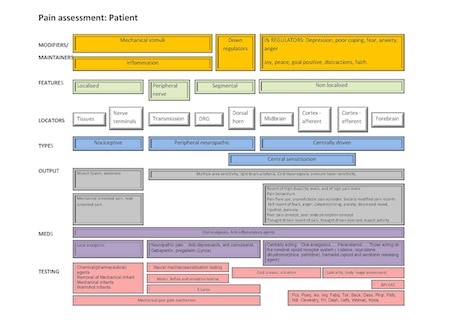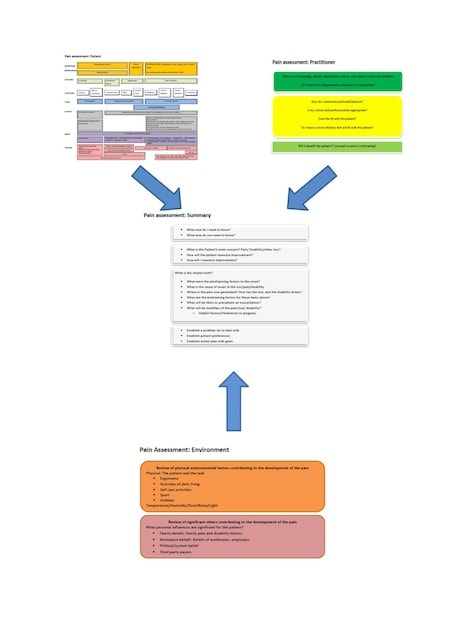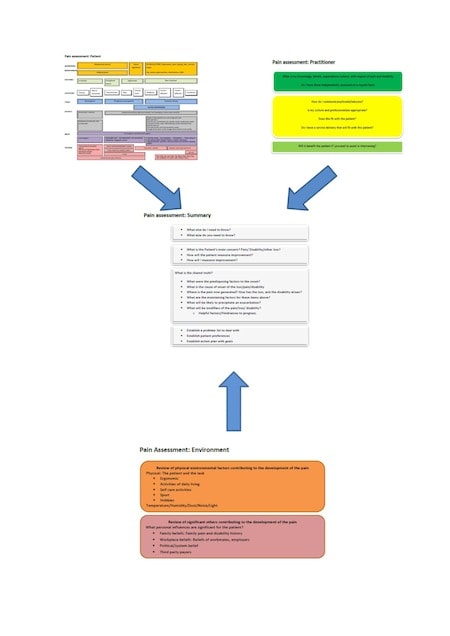In my general physiotherapy practice about one in five patients come with complex pain, disability and loss. I love sorting out the pieces of the puzzle that creates these situations. A challenge is not to get lost amongst all the pieces. So I take the patient on a journey of discovery as I find all the pieces, so I can then help them see their problem in its components and in its whole. Part of the journey of discovery involves using this diagram with the patient. I use it as an aide memoir – so I don’t forget which pieces to look for! And I use it to explain how the pain may have started, where it may be generated and how I might test and examine it.
The Pain Assessment: Patient diagram does not limit what model of management I might use, it just gives me data. Think of it as a datascape that informs a paradigm, and then I can move to choose a categorisation process, or a clinical prediction tool, or some other process: to effect my evidence based care! (Download high quality Pain assessment patient PDF here)

Additional notes
This diagram is a part of a suite of tools I use to help identify the patient’s loss in terms of pain and disability, and how we can chart a way forward to recover the loss. I also assess the patient’s environment and I review my own input and influences, before I proceed to summarise.
The Pain Assessment: Environment, is self evident for the most part. It may involve not only assessing the physical environment externally, but also interviewing significant others to check on their influence on the patient’s beliefs and behaviours. Download Environment PDF here
The Pain Assessment: Practitioner is a challenge as it demands of myself that I should regularly review my own knowledge/beliefs and expectations and how I might communicate this to the patient. I ask whether my service delivery model is one that fits with the patient’s needs, indeed is helpful to be involved in assisting the patient at all or will it be counter-productive. Do I have my own knowledge and behaviour peer reviewed. Download Practitioner PDF here
With the Pain Assessment: Summary I then agree on a shared truth with the patient with regard to their main concern regarding their pain, disability, and loss: and then regarding the predisposing factors to the pain and disability along with the current generator and what might modify them in the future. Only then an action plan can be collaboratively established along with goals that are meaningful to the patient and to others. Download Summary PDF here.
About David Young
 David Young is a physiotherapist in private practice in Sydney, Australia.
David Young is a physiotherapist in private practice in Sydney, Australia.
He occasionally takes unsuspecting undergraduate physiotherapy students for clinical practicums, and teaches physiotherapists, chiropractors, osteopaths and exercise physiologists for WorkCover NSW regarding reducing long term disability for workplace injury.




